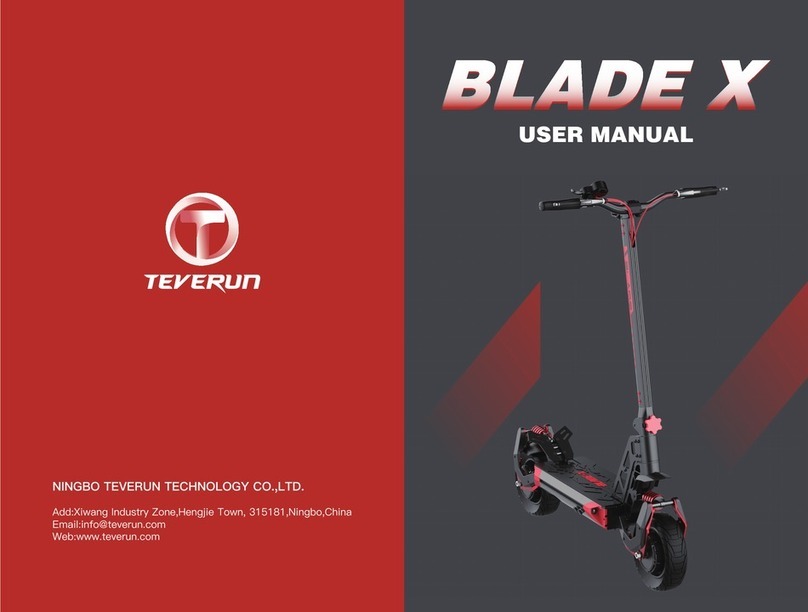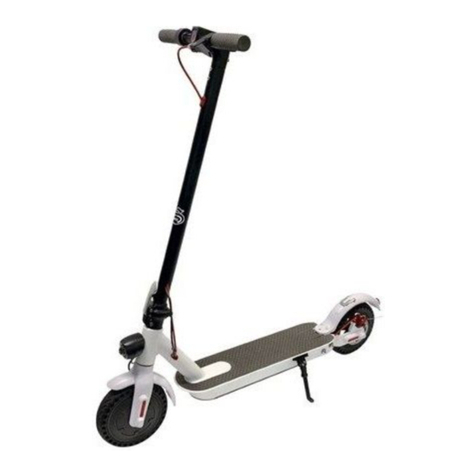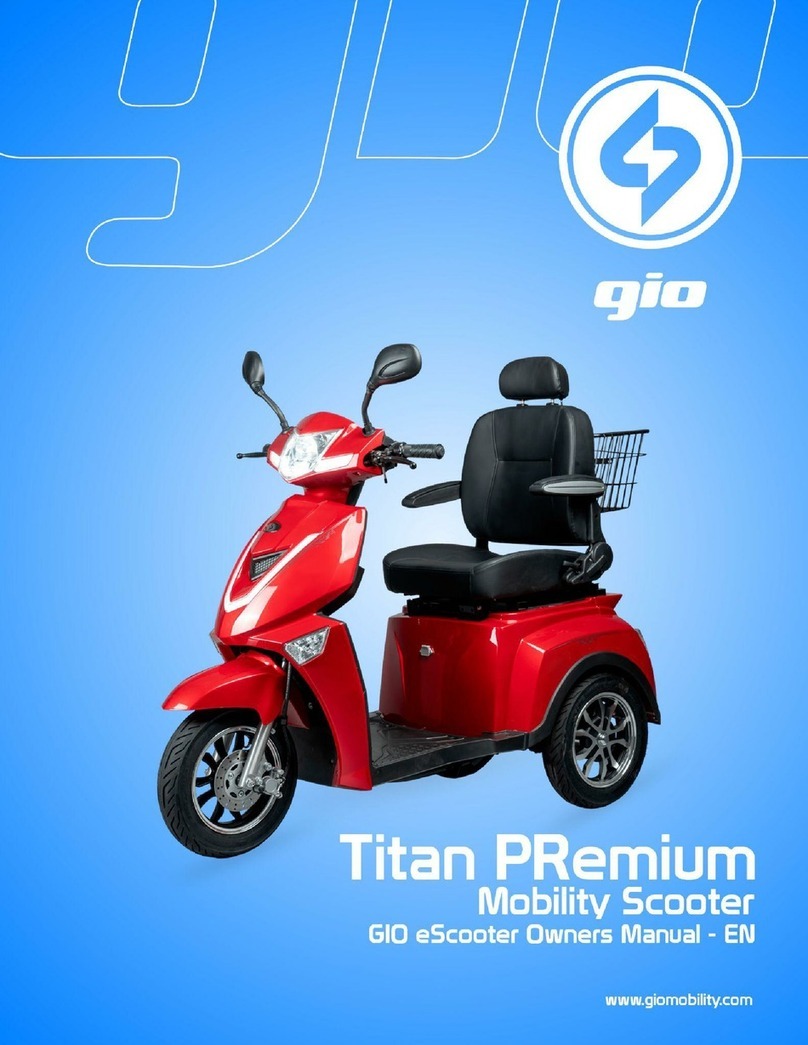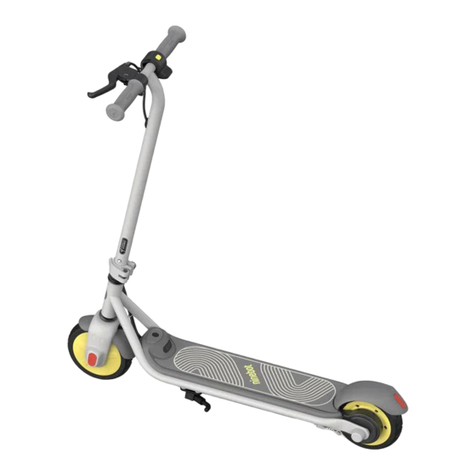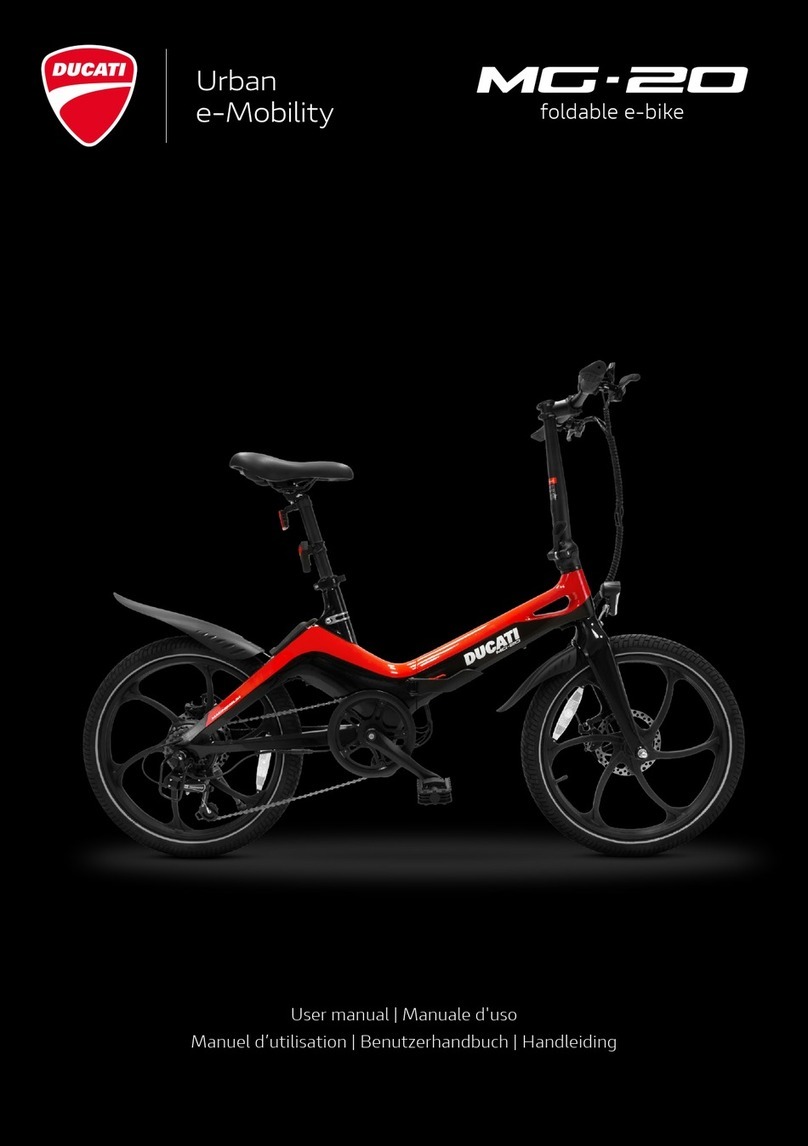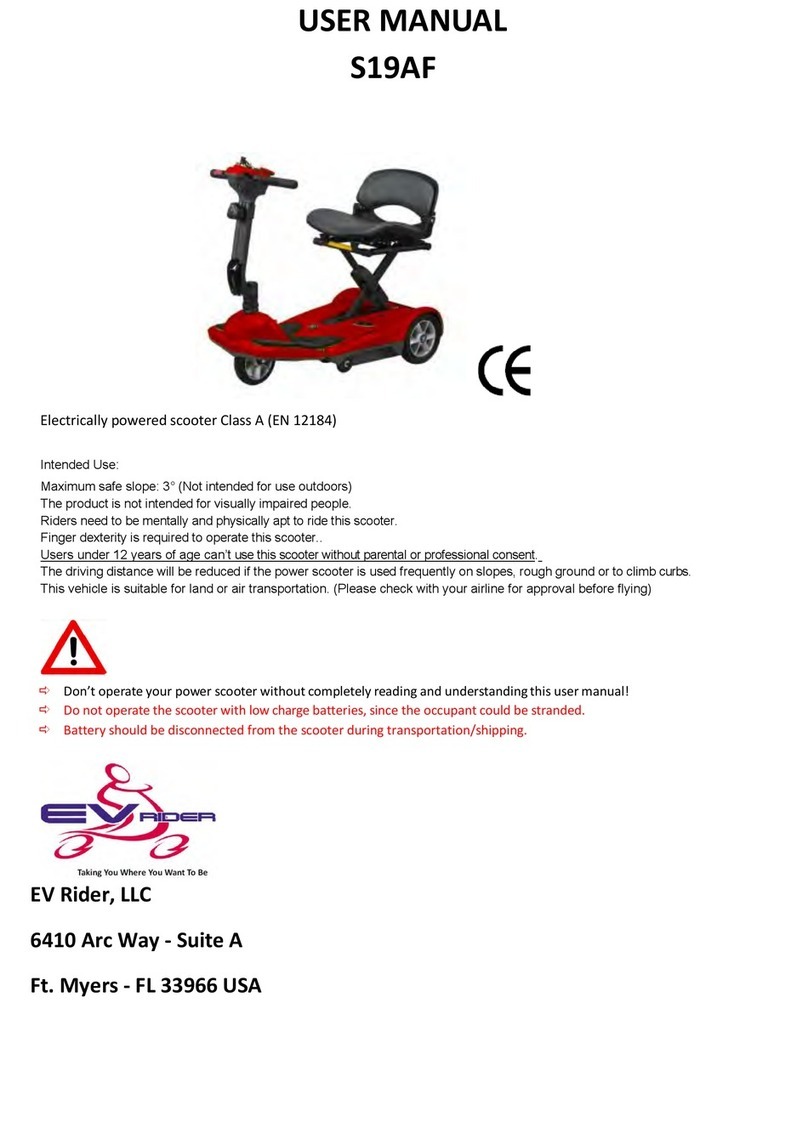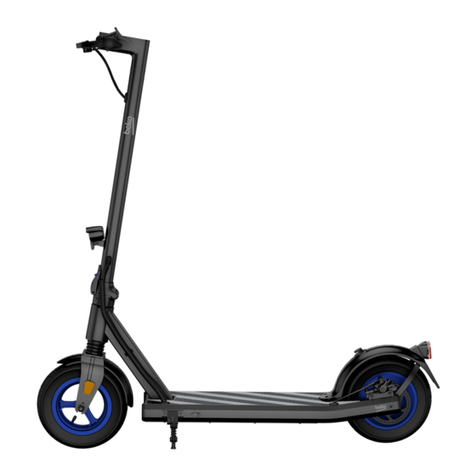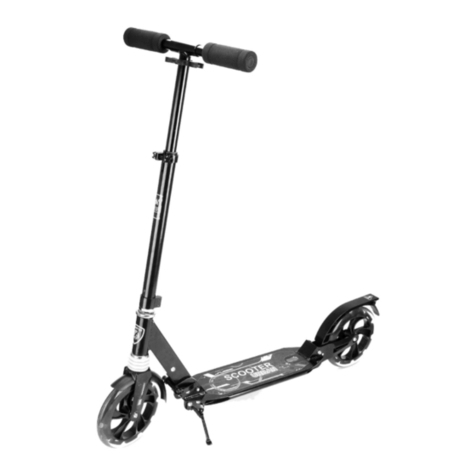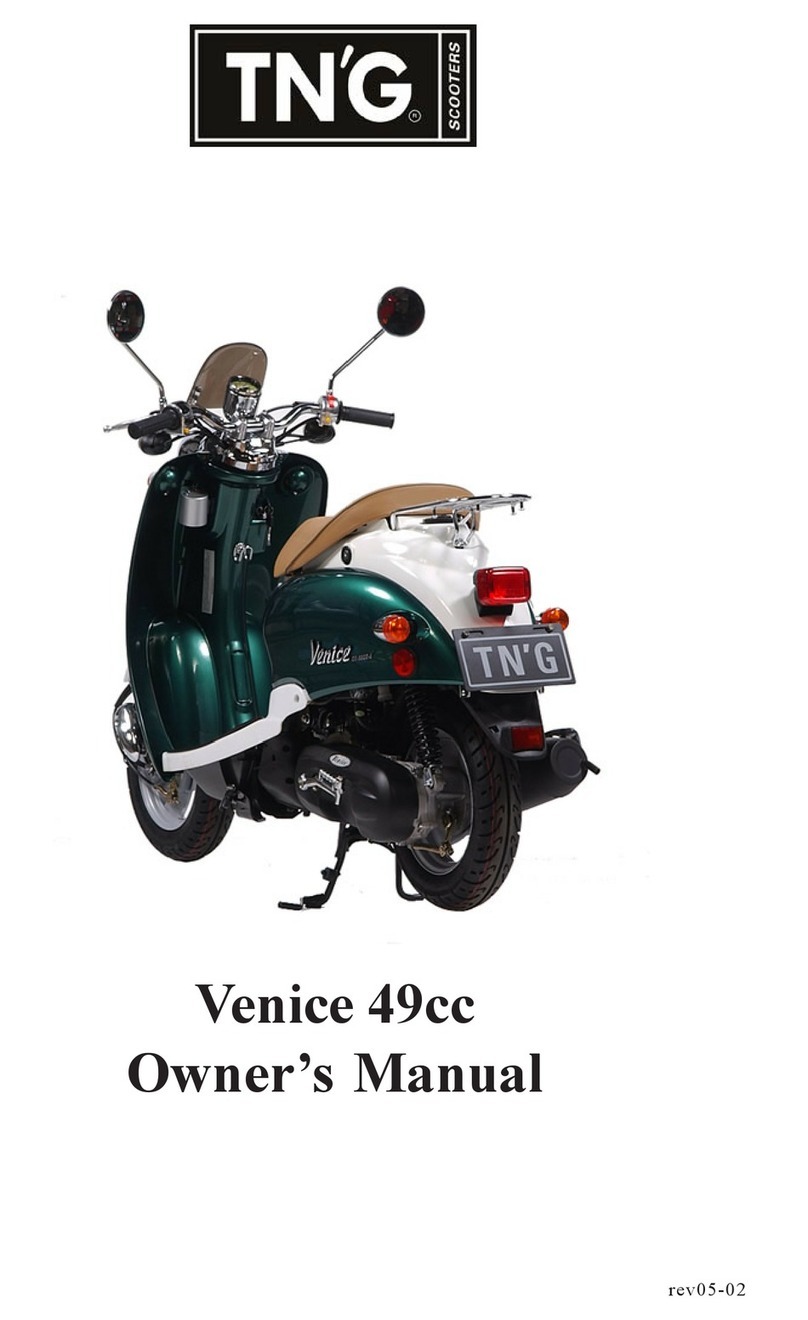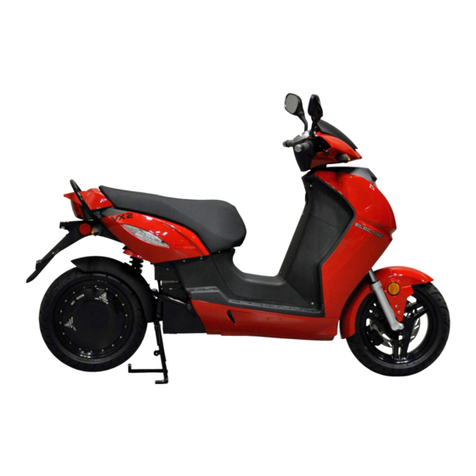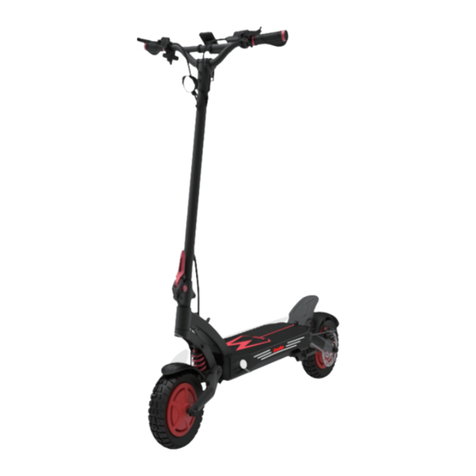TEVERUN BLADE GT User manual


BEFORE RIDE TABLE OF CONTENTS
It is important to read through, understand, and adhere to all the instructions and
safety warnings in this manual before charging and operating this scooter.
Upon receiving and opening your box, please inspect the contents for signs of
damage or loose screws from transport. If something doesn’t feel right, please
take a few pictures and contact your place of purchase immediately.
Your scooter comes with a 180-day limited warranty against manufacturing
defects. In case of any issues beyond this time frame, we will still help you but we
may need to charge a fee for spare parts or repairs.
If you have purchased your scooter from a dealer of Teverun, please contact them
first in case of any issues. If you still need help or you have purchased directly from
www.Teverun.com, please feel free to contact us with any questions or concerns.
Make sure you understand and adhere to local rules and regulations for riding
electric scooters. Riding an electric scooter comes with inherent risks and hazards.
To minimize risk of falling or being injured, make sure you understand how to
safely operate and control this scooter.
Always use good judgement, common sense, and protective gear.
BEFORE RIDE 1
CONTENTS 2
GENERAL SAFETY WARNINGS 3
OVER VIEW 4
What’s in the Box 4
CHARGING AND BATTERY SAFETY 5
Charging Warnings and BatterySafetyWarnings 6
OPERATIONS 7
DISPLAY& KEY SETTINGS 9
SCOOTER MAINTENANCE & TRANSPORT 11
Memo 12
21

GENERAL SAFETY WARNINGS
Always wear a helmet and protective safety equipment.
Wear closed shoes without heels and ensure your laces are tied.
Do no tride with more than one rider or exceed the weight limit of 120kg/265lbs in
any other way. Only use your scooter inline with its intended purpose.
Check your scooter for any loose parts or screws, flat tires, signs of damage or
excessive wear before every ride. Stop operation immediately and contact your
place of purchase if something does not feel right.
Start riding slowly to familiarize yourself with the operation of your scooter. Start in
first gear and slowly try out the brakes. Always slow down when riding over bumps
or on rough road conditions. Keep the scooter away from children. It is not a toy.
Riders must be age 16+ only.
Do not use your electric scooter in heavy rain, or on surfaces covered by more than
½ inch of water. Do not submerge the scooter in liquid or let any liquid near the
battery or electrical components.
Do not lend your scooter to anybody unfamiliar with its operation. Ensure any new
riders are familiar with these instructions and are wearing proper safety gear.
Once riding in public space, you are subject to the risks faced by all traffic
participants just like when you are riding a bike.
● Other traffic participants may not obey traffic regulations or may ride carelessly.
● The faster you ride your scooter, the longer it will take you to stop.
● The scooter may slip on slippery surfaces leading to subsequent injuries to the
rider. Pay special attention crossing train tracks and/or when it is wet.
Always use caution, adapt your speed to road and traffic conditions and keep
distance from other traffic participants.
Watch out for pedestrians. Do not use your scooter in any way that could harm
pedestrians. Slow down when you are passing them to avoid accidents.
You must follow all local traffic rules andregulations.
OVER VIEW What’s in the Box:
Scooter
Charger
Manual
Tool
43

CHARGING AND BATTERY SAFETY
Charging the scooter:
1.Turn your scooter off
2.Locate the charging port
3.Open the charging portcover
4.Connect the charger to the scooter’s charging port
5.Plug in the charger to the wall power outlet
The LED on the charger will turn red while charging and turn green when the
scooter is ready for use. Remove the charger and cover the plug.
Battery Maintenance
We suggest to charge your scooter after every use. This is not required but
recommended.
A lithium-ion battery is a consumable device. Please replace with a new battery
once capacity drops below 50% of what you experienced initially. Contact your
place of purchase for a replacement.
Make sure the battery is charged and that the scooter is turned off before storing
your scooter for extended periods at a time.
Store your scooter in a dry and cool place. Do not keep it outdoors or in outdoor
sheds for extended periods of time, as excessive cold temperatures, heat, sunlight,
rain, or other environmental conditions may impact safe operation and reduce the
scooter’s lifespan.
Charge your battery at minimum every 3 months to prevent it from running
completely empty. Once the battery runs completely empty due to slow discharge
while in storage, it may have to be replaced.
Batteries perform poorly at low temperatures. For instance, if the temperature
is around 0 ° F(-18 ° C), battery capacity reduces by 50%. Capacity will restore to
normal when temperatures rise.
Battery life and riding ranges will vary depending on usage, climate, conditions,
rider weight, and/or riding style, proper care, and maintenance.
Battery Disposal
Do not dispose of your battery by way of landfilling, incineration, or household
trash.
We recommend disposing your battery through a local recycling program suitable
for lithium-ion batteries. Contact your local waste management service for more
information.Mishandling of used batteries may do tremendous harm to the
environment. You must abide by local laws and regulations to properly dispose of
used batteries.
Charging Warnings and Battery Safety Warnings
Use caution when using outlets to prevent electric shock.
Do not leave the charger plugged in for extended period of times (>24 hours).
Only charge your scooter in a safe, clean, and dry environment. Keep the charger
and scooter away from inflammable materials as they may get hot.
Only use the original battery packs and the original charger supplied with your
electric scooter. Contact your place of purchase if you need a replacement. Use of
other models or brands may not be safe.
Do not touch any part of the USB charging prongs and keep them away from
metal objects to prevent short circuiting which may result in battery damage or
physical injuries, and/or death.
Do not place the battery in direct contact with heat or near high temperatures.
Do not expose the battery to direct sunlight. Do not leave the scooter in a car
where the battery might get hot.
Do not pierce the battery with sharp objects. Do not subject it to impact or force.
Stop charging if the battery fails to recharge within the approximate charging
time. This will prevent the battery from overheating, rupturing, or igniting.
Do not charge the battery in temperatures below 32 ° F (0 ° C) or above 104 ° F
(40 ° C) as this can hamper performance, result in breaking, overheating,
rupturing, or igniting and could cause personal injury or property damage.
Do not charge your scooter if the charging port on the scooter is damaged or
wet. Do not charge if there is excessive heat, odor or leakage coming from the
battery or it looks abnormal in any way.
If the battery leaks and you accidentally get in touch with the liquid, rinse
immediately and thoroughly with water and then seek medical care.
Never attempt to disassemble, modify, perform repairs or maintenance on the
battery. You run the risk of damaging the protective and safety components that
prevent incidents, personal injury or property damage.
Mishandling or misuse of the battery can result in lower performance, shorter
lifespan, rupturing, igniting, or other incidents and could increase the risk of
serious personal injury.
Do not discharge the battery using any other product than the scooter it comes
with. Doing so could result in damage to the other product or the battery, and
reduced lifespan of your scooter. The battery could overheat, rupture, or ignite
and cause personal injury or property damage.
●
●
●
●
●
●
●
●
●
●
●
●
●
●
●
WARNING! Please turn off the vehicle when charging
WARNING! Don't charge the flooded scooter and check with a professional
WARNING! Don't charge the scooter when no one is present or while sleeping Don't
charge the WARNING! Don't charge the scooter when you find an electric
shock and check with a Professional
WARNING! Don't charge or leave the battery storage under a high-temperature above
45 degree
WARNING! Don't touch the charging port with the wet hands
WARNING! Do not charge near fire
65

OPERATIONS
Assembling scooter
Carefully open the box and take the scooter out with both hands. Do not pull the
steering bar out by itself, as it is attached to the rest via the cable work. Also
pay attention not to lose the metal plaque with the fluid logo which you will need
to screw on to secure the steering bar to the scooter.
1.Place the scooter on the floor and secure it by
pulling out thekickstand
2.Lift the handle post into a vertical position. And
fasten both quick release buckles.
3.Place the steering bar onto the handle post and
screw the metal plaque (with fluid logo) onto
it with the four screws provided. For the most
comfortable riding position, we recommend you
place the handlebar in the most upward position
when tightening the screws.
Folding your Scooter
Loosen the quick release buckles and slide the locking ring upwards.
Your First Ride
Before using your scooter, make sure to visually inspect it for any signs of damage
or loose parts/screws. Every scooter is individually tested before shipping from
the factory, but we recognize that it has travelled far and in rare cases, it can get
damaged during transport. If something does not feel right, contact your place of
purchase before riding your scooter.
Pull the brake levers and ensure there is sufficient tension on the brakes BEFORE
your first and any subsequent ride.
Ensure you have sufficient run way ahead of you. Do not use the scooter indoors.
Put both of your hands on the handle bar.
Step with one foot on the scooter, kick it lightly with your other foot to bring it
slightly in motion. Step with your second foot onto the board, hold on tight and
pull the accelerator. Do prepare for strong acceleration and start slowly.
Braking Correctly
The scooter has dual front and rear disc brakes.
For braking, use the rear brake (the left braking lever on the handle bar) first for
decelerating before engaging the front brake (the right lever) to come to a full
stop.
When travelling at higher speeds, exercise caution when braking as the brakes
are sensitive.
This is especially true for the front brake as you risk falling over the handle bar if
your center of gravity is too high while performing a hard stop with the front brake
alone.
87

DISPLAY & KEY SETTINGS
Turn Signal / Mode Switch
The switch has the following functions: light, turn signal, and
horn button. When the light button is pressed, the front and
rear deck light will turn on.
When the turn signal button is pressed, the front and rear deck
light will turn on and flash. When the horn button is pressed,
the horn will start to work.
When multiple buttons are pressed, the priority for the function
from highest to lowest is turn signal, brake, and then light.
(1)Speed step setting Can adjust with button.
While the instrument panel is on,press to set the speed step.
The setting is completed when the selected speed step value is selected.
* Blinks 3 times per 10 seconds when the remaining battery power is 10%.
It blinks continuously when the remaining battery power is 10%.
(2)Functions and settings for each main screen mode can adjust with button.
(3)Instrument panel detailed function
You can change the setting mode by turning on the power of the
dashboard and pressing for 2~3 seconds.
In the setting mode, press once to change the internal setting
value
* If you change default setting value P0(13), P1(72), 3 P2(15), P3(0)
the exactinformation is not displayed.
Display Settings –
The scooter is equipped with the following display:
10
9
Speed
Speed step
Power button
Accelerator
index finger
throttle
Mode button
Driving time
Speed unit
Battery balance
Mode Discription
Accumulated mileage
Not in use
Current voltage
Drive time
Setting mode
Setting value
Current mileage
(Press and hold mode button to reset to '0')
TRIP
ODO
CHA
VOL
TIME
11(Fixed)
Start method
0(Acceleration start),
1(Kick start)
Electronic
brake power
0(Off)
~5(Powerful)
60(Fixed)
Cruise mode
0(OFF)
1(ON)
LCD brightness
control
0(Back light off)
~5(Brightest)
15(Fixed)
Slow start
0(Off:Power start)
~5(Slow start)
Auto off
time setting
5~30 minutes
0(Fixed)
Max output
5~100%
(User adjust)
ABS setting
0(OFF),
1(ON)
Speed unit
0(Km/h), 1(mp/h)
Battery save
1(MAX SAVE)
2(MID SAVE)
3(NO SAVE)

SCOOTER MAINTENANCE & TRANSPORT MEMO
Never perform maintenance on this product while the unit is powered on or
charging. Always power off before performing maintenance. Do not attempt to
perform repairs or modify the scooter but contact your place of purchase or
refer to a professional repair facility.
Clean stains on your scooter’s body with a damp cloth. Do not use alcohol,
gasoline, kerosene, or other corrosive and volatile chemicals. Do not wash with
high pressure cleaners. Make sure the scooter is turned off and unplugged during
cleaning and ensure no moisture enters the charging port.
When transporting your scooter, please take into account that it contains lithium-
ion batteries that are considered a hazardous material.
Always exercise caution and follow applicable rules and regulations when
transporting your scooter. It is very likely that you will not be allowed to take your
scooter and battery on an airplane.
NOTE: INFORMATION, SPECIFICATIONS, WARNINGS AND ALL OTHER DETAILS
INCLUDED IN THIS MANUAL ARE SUBJECT TO CHANGE AT ANY TIME, WITHOUT
PRIOR WRITING. INQUIRE WITH THE VENDOR'S AFTER-SALES DEPARTMENT FOR
MORE INFORMATION.
1211

Table of contents
Other TEVERUN Scooter manuals
